7.2 /10 2 Votes
2.5/4 Roger Ebert Composer(s) Robert Cobert Budget 150 million USD | 6.2/10 IMDb 37% Rotten Tomatoes Release date 11 May 2012 (India) Box office 245.5 million USD | |||||||||||||||||||||||||||||||||
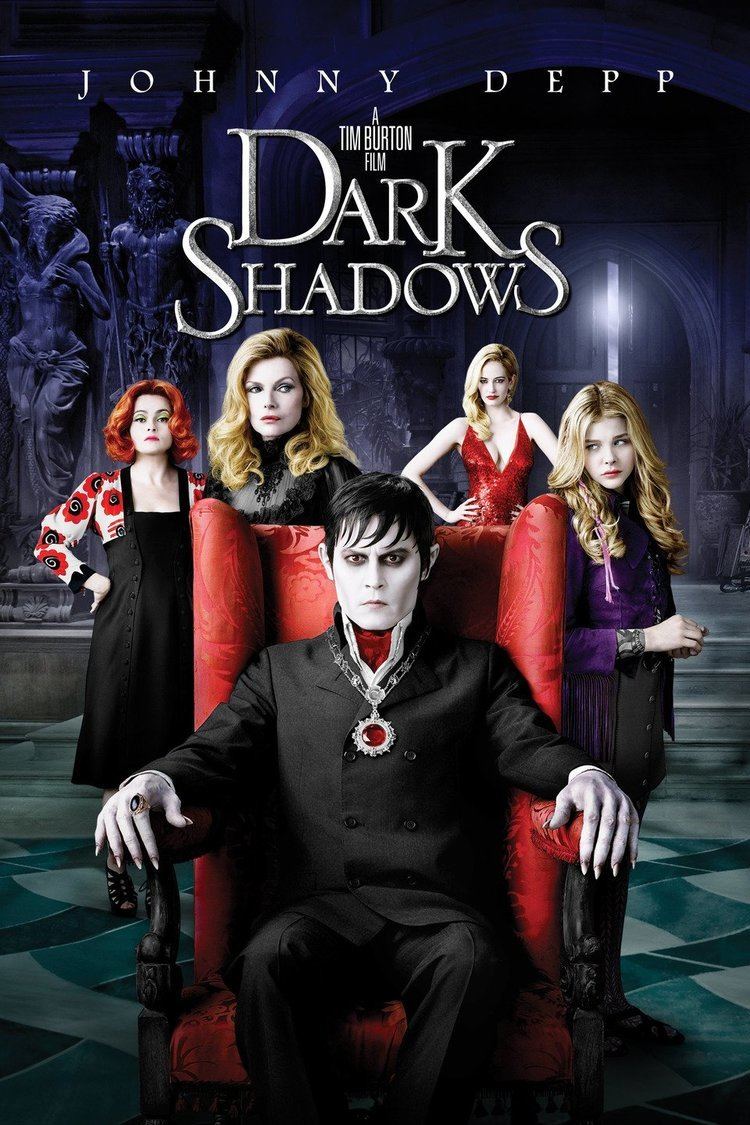 | ||||||||||||||||||||||||||||||||||
Genre Soap operaGothic horror Written by Gordon RussellSam HallRon SproatViolet WellesMalcolm MarmorsteinArt WallaceJoe CaldwellFrancis SwannRalph Ellis Starring Joan BennettGrayson HallJonathan FridNancy BarrettAlexandra MoltkeLouis EdmondsKathryn Leigh ScottDavid SelbyDavid HenesyLara ParkerThayer David Production companies Warner Bros., Infinitum Nihil Cast Johnny Depp, Eva Green, Chloë Grace Moretz, Jonathan Frid, Helena Bonham Carter Similar Directed by Tim Burton, Johnny Depp movies, Vampire movies Profiles | ||||||||||||||||||||||||||||||||||
Dark shadows official trailer 1 johnny depp tim burton movie 2012 hd
Dark Shadows is an American Gothic soap opera that originally aired weekdays on the ABC television network, from June 27, 1966 to April 2, 1971. The show depicted the lives, loves, trials and tribulations of the wealthy Collins family of Collinsport, Maine, where a number of supernatural occurrences take place.
Contents
- Dark shadows official trailer 1 johnny depp tim burton movie 2012 hd
- History
- Broadcast history
- Preservation
- Syndication and cable repeats
- Episode numbering
- 19667
- 1795
- 19689
- 1897
- 196970
- 1970 Parallel Time
- 1995
- 1970
- 1840
- 1841 Parallel Time
- Cast
- Locations
- Special effects
- Errors
- Music
- Home video
- Films
- Novels
- Magazines
- Comics
- Other media
- Audio drama
- Big Finish Productions
- 1991 NBC
- 2004 The WB
- 2012 Film
- References
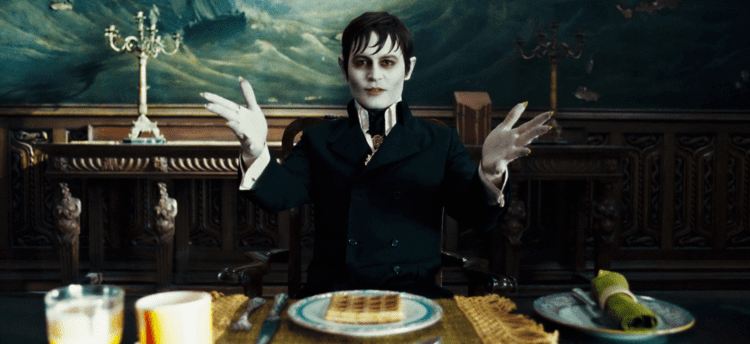
The series became hugely popular when vampire Barnabas Collins (Jonathan Frid) appeared ten months into its run. Dark Shadows also featured ghosts, werewolves, zombies, man-made monsters, witches, warlocks, time travel, and a parallel universe. A small company of actors each played many roles; indeed, as actors came and went, some characters were played by more than one actor.
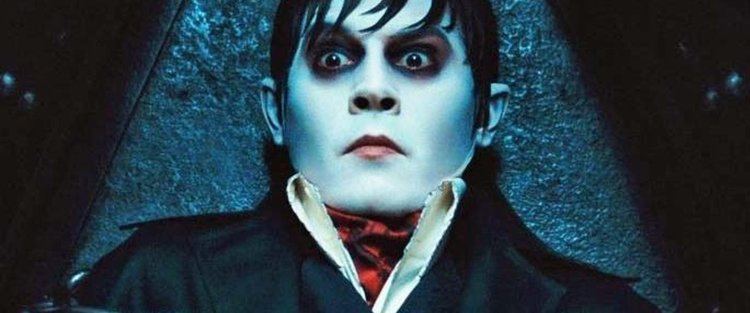
Dark Shadows was distinguished by its vividly melodramatic performances, atmospheric interiors, memorable storylines, numerous dramatic plot twists, adventurous music score, broad cosmos of characters and heroic adventures. The original network run of the show lasted for nearly five years to amass 1,225 episodes.
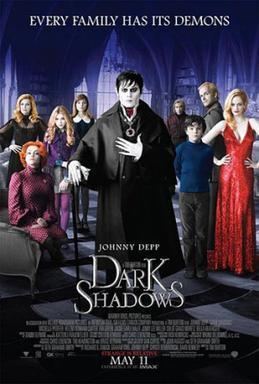
It continues to enjoy an intense cult following. In 2004 and 2007, Dark Shadows was ranked #19 and #23 on TV Guide's Top Cult Shows Ever.

Since 2006, the series has continued as a range of audio dramas produced by Big Finish Productions, featuring many of the original cast, including David Selby, Lara Parker, and Kathryn Leigh Scott.

History
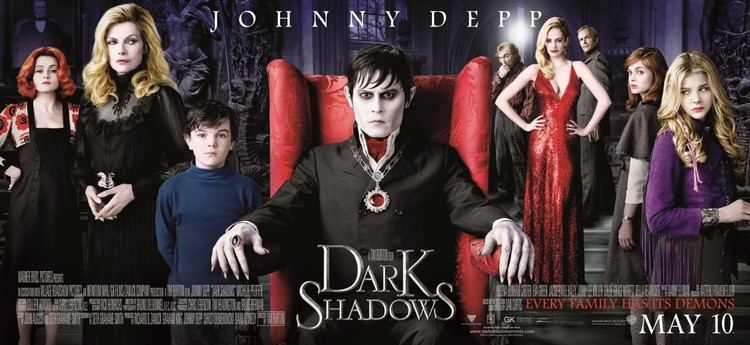
Creator Dan Curtis claimed he had a dream in 1965 of a mysterious young woman, who was on a train. The following day Curtis told his wife of the dream and pitched the idea as a TV series to ABC. Network officials greenlit production and Curtis began hiring crew members.
Art Wallace was hired to create a story from Curtis's dream sequence. Wallace wrote the story bible Shadows on the Wall, the proposed title for the show, later changed to Dark Shadows. Robert Costello was added as a line producer, and Curtis took on the creator and executive producer roles. Lela Swift, John Sedwick, and Henry Kaplan all agreed to be directors for the new series. Robert Cobert created the musical score and Sy Thomashoff designed the set.
Curtis then set out to find the actress to play the girl on the train. Alexandra Moltke, a young actress with little experience, was discovered and cast in the role of Victoria Winters, an orphan who ends up in the mysterious town of Collinsport, Maine, to unravel the mysteries of her past.
Veteran film star Joan Bennett was soon cast as Victoria's employer Elizabeth Collins Stoddard, a woman who had not left her home in over eighteen years. Stage actor Louis Edmonds was cast as Elizabeth's brother Roger Collins. Another stage actress, Nancy Barrett, was then cast as Elizabeth's head-strong daughter Carolyn Stoddard, and child actor David Henesy was cast as Roger's troubled son David Collins.
Dark Shadows had a rocky beginning. Critics were quick to deem the series rather boring for its heavy use of unknown actress Moltke and the slow progression of the show's legacy. The earliest episodes consisted of introducing the troubled characters and did not show any of the supernatural elements that later made the show a hit.
As production on the series continued, the introduction of many new and mysterious characters and various unknown actors and actresses was prevalent on the set. Most actors also ended up playing multiple characters, and those same characters would often return through flasbacks or the unprecedented use of parallel time lines.
Broadcast history
Perhaps one of ABC's first truly popular daytime series, along with the game show Let's Make a Deal, Dark Shadows found its demographic niche in teenagers coming home from school in time to watch the show at 4 p.m. Eastern / 3 p.m. Central, where it aired for almost all of its network run, the exception being a 15-month stretch between April 1967 and July 1968, when it aired a half-hour earlier. Originally, it was aired in black-and-white, but the show went into color starting with the August 11, 1967 installment transmission. It became one of ABC's first daytime shows to actually win its timeslot, leading to the demise of NBC's original Match Game and Art Linkletter's long-running House Party on CBS, both in 1969.
The series reached its peak in popularity during a storyline set in the year 1897, broadcast from March 1969. By the end of May, Dark Shadows was ABC's most popular soap opera, and by late 1969 it was reaching between 7 and 9 million viewers on any given day, and ranking 11th out of a total 15 daytime dramas in that time period. In November 1969, after nine months of some of Dark Shadows' most intricate, intelligent storylines, an end came to the adventures in 1897. Now the writers were faced with a dilemma: with ratings at an all-time high, what could they do next to hold the audience? Their decision, a storyline known as "The Leviathans", proved to be a thematic misstep for the show and one from which it never recovered. Fans tended to dislike the portrayal of Barnabas as the pawn of some greater power. They proved to be more interested in the archetypes of classic horror, the vampire, the witch, the werewolf than in off-camera suggestion. The launch of Somerset in March 1970, a much-ballyhooed spin-off of NBC's Another World, also hurt the series considerably. The release of the film House of Dark Shadows in September of that year is also thought to have caused TV ratings to fall, perhaps because of parents who attended the film with their children and, seeing the amount of blood spilled across the screen, discouraged their children's choice of television viewing material. Beginning in the fall of 1970, several ABC stations across the country dropped the show due to falling viewership. Within six months, ratings dropped from 7.3 to 5.3. Ironically, Nielsen ratings for March 1971, the last full month that Dark Shadows was on the air, revealed that viewership had risen in its final weeks.
By early 1971, though, ABC was trying to cut costs in the face of harsh new economic realities including a national economic recession, a sharp dip in advertising revenue following the discontinuance of cigarette commercials, and a record-high number of competing soap operas—which were more expensive to produce than game or talk shows—on the networks' daytime schedules. Thus, the network began weeding out supposedly unproductive programming. Despite its relatively high station clearances for its timeslot and low production costs, Dark Shadows fell victim to the purge mainly because of its young audience, who usually did not make decisions about the purchasing of household goods and food products for the family, which were the two chief industries that bought airtime on daytime television in that era. Practically no other daytime show skewed so much under the 18–35 demographic threshold as Dark Shadows did. Furthermore, prime-time shows and movies with horror or science fiction themes (e.g., Star Trek, The Man from U.N.C.L.E.) had been on the decline for some time, and, of course, the serial appealed heavily to fanciers of those genres, people who usually didn't express much interest in the often sentimental domestic or romantic themes on which traditional soaps had relied since their inception on radio in the 1930s. In addition and probably more decisively, the program experienced a precipitous drop in its ratings during its last two years on the air, falling from a peak of 8.4 in the 1968–1969 television season to a 5.3 in 1970–1971. Reflecting on the series' cancellation, in an interview included in a 2005 DVD release, series creator Curtis welcomed the show's cancellation, feeling it had run out of fresh ideas: "I was just hoping it was going to end. I couldn't squeeze my brain any harder to come up with just one more story. I just wanted to move on and out."
Despite many letters of protest from outraged fans, ABC canceled the five-year-old show on April 2, 1971, and replaced it with a new version of the hit 1960s game show Password. The rather abrupt ending of the series left some plotlines (such as Victoria Winters' parentage, and the story of the Jennings family) unfinished, though most of the plot threads came to a happy conclusion, via a voice-over explaining future events in the final minute of the last episode.
The original cast reunited in 2003 for a special reunion play recorded for MPI, and in 2006 resumed production of Dark Shadows audio dramas for Big Finish (see below). These dramas have been ongoing for 10 seasons.
Preservation
Dark Shadows has the distinction of being one of the few classic television soap operas to have all of its episodes survive intact except one, although a handful of early episodes are available only in 16 mm kinescope format. For the one lost episode (#1219), only a home audio recording exists. The home video version and cable reruns of this episode were reconstructed from a combination of this soundtrack, video still frames sourced from other episodes, and the closing and opening scenes from episodes #1218 and #1220 respectively. The search for the preserved episodes of this series also uncovered several hundred episodes thought lost of another series, The Hollywood Squares.
Syndication and cable repeats
Dark Shadows was to be syndicated by ABC's distribution arm, ABC Films, as the series was ending in late 1970 and early 1971. However, delays kept the show from entering syndication, mainly because the FCC imposed Financial Interest and Syndication Rules, forcing the networks to sell off their syndication companies. Finally, in 1975, Worldvision Enterprises (spun off from ABC Films) released 130 episodes to syndication. Over the years, more episodes were released in varying quantities until the show finished its syndicated run in 1990. However, the first 209 shows and roughly the last year's worth of shows were never seen in syndication. Dark Shadows was lucky to be in reruns at all; most daytime programs at the time were being destroyed in an effort to recycle the videotape, and those programs that survived were usually locked away without being seen again. The series is now distributed by CBS Television Distribution.
For many years the show was rerun on Sci-Fi Channel, now known as Syfy. Unlike previous networks, Syfy had the entire run of 1,225 episodes to show. The network stopped airing Dark Shadows in December 2003, only two weeks short of completing the series. All 1,225 episodes in the series were shown at various times between 1992 and 2003.
Episode numbering
A total of 1,225 episodes were produced, but during the course of its run, the show was preempted 20 times. ABC would compensate by occasionally skipping, double numbering and, in one case, triple numbering episodes in order to keep a show ending in a 5 or 0 airing on Fridays. This is why the last episode produced has #1245 when in actuality it was only the 1,225th episode produced.
1966/7
Victoria Winters' Parentage, episode 1 to 92.
Burke Devlin's Revenge For His Manslaughter Conviction, episode 1 to 201.
Roger Collins' Mysterious Car Crash, episode 13 to 32.
The Murder of Bill Malloy, episode 46 to 126.
Laura Collins the Phoenix, episode 123 to 192.
Jason McGuire Blackmails Elizabeth Collins Stoddard, episode 193 to 275.
The Return of the Vampire Barnabas Collins, episode 202 to 220.
The Kidnapping of Maggie Evans, episode 221 to 261.
Julia Hoffman's Attempt to Cure Barnabas, episode 265 to 351.
Barnabas Terrorizing Julia Hoffman, episode 352 to 365.
1795
Angelique Bouchard's Vampire Curse on Barnabas, episode 366 to 426.
Victoria Winters's Witchcraft Trial, episode 400 to 461.
Nathan Forbes' Manipulation of Millicent Collins, episode 419 to 460.
1968/9
The Mystery of Jeff Clark, episode 461 to 665.
The Creation of Adam, episode 466 to 636.
The Dream Curse, episode 477 to 548.
Elizabeth's Fear of Being Buried Alive, episode 513 to 672.
Nicholas Blair's Scheme to Create A Master Race, episode 549 to 633/634.
Chris Jennings' Werewolf Curse, episode 627 to 700.
The Ghosts of Quentin Collins and Beth Chavez Haunt Collinwood, episode 639 to 700.
1897
Barnabas’ Mission to Save David Collins, episode 700 to 839.
Jenny Collins, the Mad Woman in the Attic, episode 707 to 748.
Laura Collins the Phoenix, episode 728 to 761.
Magda Rakosi's Werewolf Curse on Quentin, episode 749 to 834.
Gregory Trask's Manipulation of Judith Collins, episode 762 to 884.
The Hand of Count Petofi, episode 778 to 814.
The Creation of Amanda Harris, episode 812 to 850.
Barnabas's Infatuation with Kitty Soames, episode 844 to 885.
Count Petofi Body Swaps with Quentin, episode 849 to 883.
1969/70
Barnabas Falls Under the Control of the Leviathans, episode 886 to 950.
The Mystery of Grant Douglas and Olivia Corey, episode 888 to 934.
Chris Jennings's Werewolf Curse, episode 889 to 978.
The Leviathan Child, episode 891 to 929.
Jeb Hawkes the Leviathan Leader, episode 935 to 980.
1970 Parallel Time
The Death of Angelique Collins, episode 969 to 1060.
Cyrus Longworth's Experiment, episode 978 to 1035.
1995
The Destruction of Collinwood, episode 1061 to 1070.
1970
The Ghosts of Gerard Stiles and Daphne Harridge Haunt Collinwood, episode 1071 to 1109.
1840
Barnabas's Infatuation with Roxanne Drew, episode 1081 to 1150.
The Head of Judah Zachery, episode 1117 to 1138.
Judah Zachery's Possession of Gerard Stiles, episode 1139 to 1197.
Quentin Collins's Witchcraft Trial, episode 1162 to 1197.
1841 Parallel Time
Bramwell Collins's and Catherine Harridge's Love Affair, episode 1186 to 1245.
The Cursed Room Lottery, episode 1194 to 1245.
Cast
Character names noted with * indicates appearance of a counterpart in an alternate reality known as Parallel Time during episodes 969 to 1060 or 1186 to 1245.
¹ Parallel counterpart played by Mary Cooper during episodes 1206 to 1238.
² Played by Betsy Durkin during episodes 630 to 650; and Carolyn Groves during episodes 662 to 665.
³ Played by Diana Walker during episode 578.
⁴ Played by Mark Allen during episodes 5 to 22.
⁵ Played by George Mitchell during episodes 6 to 16.
⁶ Played by Vince O'Brien during episodes 148 to 174, 328 and 503 to 675; Angus Cairns during episodes 341 and 342; and Alfred Sandor during episode 615.
⁷ Played by James Hall during episodes 199 to 205.
⁸ Played by Richard Woods during episodes 219 and 229; and Peter Turgeon during episodes 335 to 362.
⁹ Played by Edward Marshall during episode 669.
Locations
Both theatrical films, House of Dark Shadows (1970) and Night of Dark Shadows (1971), were shot primarily on location at the Lyndhurst estate in Tarrytown, New York. For the TV series, Essex, Connecticut was the locale used for the town of Collinsport. Among the locations sited there are the Collinsport Wharf, Main Street, and the Evans Cottage. The Griswold Inn in Essex was used for the Collinsport Inn, and the town post office was used for the Collinsport Police Station. The Collinwood stand-in mansion used for the TV series is the Carey Mansion in Newport, Rhode Island, until August 2009 used by Salve Regina University. The exteriors for the "Old House" (original Collinwood mansion) were filmed at Spratt Mansion, which was also located on the Lyndhurst estate; this mansion was destroyed by fire in 1969. The Lockwood-Mathews Mansion in South Norwalk, Connecticut, was also used for some scenes in House of Dark Shadows. Some outdoors shots for the series were filmed in the famous Sleepy Hollow Cemetery, not far from the Lyndhurst Mansion.
Special effects
Working within the constraints of the live-to-tape format—with almost every scene done in one take—Dark Shadows displayed an unusually inventive use of costume, make-up and, in particular, special effects. Both time travel and ghosts allowed characters killed in earlier sequences to return, often in period clothing. Séances held in the old mansion were often visited by ghostly apparitions of quivering ectoplasm. Dream sequences included colorful psychedelic spectacles superimposed over ethereal, fog-filled fantasies. Individuals of normal appearance were transformed into hideous creatures of the netherworld.
Errors
The difficulty of keeping up with the demanding schedule of a daily half-hour show manifested itself on screen. In addition to sets and props wobbling unintentionally (in one episode of the 1795 storyline, actor Thayer David bumped into a large "oak tree" and it almost fell over), heavily used actors—especially Frid and Bennett—often struggled with their lines, and occasionally, a stagehand could be spotted wandering onto the back of the set. At other times, the microphone boom appeared in the frame (giving the show the derisive nickname "Mic Shadows"), a television camera would appear on screen, a fly hovered around the head of an actor, or window curtains fell down. These "bloopers" are treasured by Dark Shadows fans and have been collected by MPI Home Video on both VHS and DVD.
Music
Of particular note is Robert Cobert's music score, which broke new ground for a television program. The original soundtrack cracked the top 20 of the U.S. Billboard national albums chart in 1969 and still ranks as one of the top-selling TV soundtracks ever. The instrumental track "Quentin's Theme", for which Cobert earned a Grammy nomination, was recorded by the Charles Randolph Grean Sounde. The single peaked at number 13 on the Billboard Hot 100 chart (and number 3 on its Easy Listening chart) in summer 1969, when Dark Shadows was perhaps at the peak of its popularity.
Home video
MPI Home Video currently holds the home video rights to the series. All episodes were issued on VHS from 1989 through 1995. Episodes 210–1245 (Barnabas' arrival through to the end of the series) have been released on DVD in 26 Collections from 2002 through 2006. Episodes 1–209 were released in 2007 under the title of Dark Shadows: The Beginning. On April 3, 2012, MPI re-released the 32 Collections. The first (and sometimes, the second) collection (from Barnabas's introduction) has been released internationally, but due to generally low sales, this has been the extent of international release of the series.
On April 10, 2012, MPI released a "Limited Edition Complete Series" box set in the shape of a coffin. The 131 DVDs are housed in 22 individual plastic cases, with the spines looking upward to show the entire body of Barnabas lying asleep in his coffin. Only 2,500 numbered copies of these were made, with each set including a limited edition card signed by original series star Jonathan Frid. A similar but unlimited "Deluxe Edition" set was subsequently released on July 10, 2012, without the limited edition card signed by Jonathan Frid and without the serial limitation number plate on the bottom of the box.
Films
MGM released a feature film titled House of Dark Shadows in 1970. Dan Curtis directed it, and Sam Hall and Gordon Russell wrote the screenplay. Many cast members from the soap opera, including Jonathan Frid, Grayson Hall, Roger Davis, and Kathryn Leigh Scott, reprised their roles. 1971 saw the release of Night of Dark Shadows, also directed by Dan Curtis and written by Curtis and Sam Hall. Actors included David Selby, Grayson Hall, Kate Jackson, and Lara Parker, among others.
During the filming of House of Dark Shadows in 1970, several actors were written out of the TV series so that they would be available to shoot the movie. Kathryn Leigh Scott was absent from 30 episodes (986 to 1015); Jonathan Frid was absent from 28 episodes (983 to 1010); Grayson Hall was absent from 21 episodes (986 to 1006); John Karlen was absent from 21 episodes (990 to 1010); Nancy Barrett was absent from 20 episodes (991 to 1010): Louis Edmonds was absent from 17 episodes (991 to 1008); Don Briscoe was absent from 15 episodes (986 to 1000); Joan Bennett was absent from 15 episodes (991 to 1006); and David Henesy was absent from 9 episodes (993 to 1001).
Novels
There have been two series of Dark Shadows novels. The first, released during the show's original run, were all penned by romance writer Marilyn Ross, a pseudonym for author Dan Ross, and were published by Paperback Library. Ross also wrote a novelization of the theatrical film House of Dark Shadows.
The second series of books consists of three novels by Lara Parker, Angelique's Descent, The Salem Branch, and Wolf Moon Rising as well as Dreams of the Dark by horror authors Elizabeth Massie and Stephen Mark Rainey.
There also have been several books about Dark Shadows, including The Dark Shadows Almanac and The Dark Shadows Companion.
Magazines
During its original run, Dark Shadows was featured in many magazines, including Afternoon TV, Castle of Frankenstein, Daytime TV, and Famous Monsters of Filmland. Even after the show ended it received coverage in genre magazines of the 1970s, like Monsters of the Movies.
In 2003, a two-part article titled "Collecting Dark Shadows: Return to Collinwood", written by Rod Labbe, appeared in Autograph Collector magazine; it was the first major article to chronicle the show in years. In 2005, Scary Monsters magazine #55 devoted an entire issue to Dark Shadows. Included were full-length interviews with cast members Marie Wallace, David Selby, and Kathryn Leigh-Scott, as well as "Don't Open That Coffin! A Baby Boomer's Adventures in the Land of Dark Shadows!" Both the Autograph Collector and Scary Monsters articles were penned by freelance writer Rod Labbe, who once ran a fan club for Dennis Patrick (Jason McGuire, Paul Stoddard) in 1969–70.
Labbe also contributes to Fangoria magazine and is currently doing a series of full-length interviews with surviving original cast members, leading up to the release of Burton's film. Labbe's interview with Jerry Lacy, who played the nefarious Reverend Trask, appeared in issue #296. His second, with Kathryn Leigh-Scott, was in issue #304. The latest, a Chris Pennock (Jebez Hawkes, aka "The Leviathan") profile, is scheduled to run in issue #310. He's already interviewed Marie (Eve and Crazy Jenny Collins) Wallace for a future issue, with more to come. A lengthier version of Kathryn's interview can be found on her website.
Comics
From March 14, 1971, to March 11, 1972, the Newspaper Enterprise Association syndicated a Dark Shadows comic strip by illustrator Kenneth Bruce Bald (credited as "K. Bruce" because of contractual obligations) to dozens of newspapers across the country. In 1996, Pomegranate Press, Ltd. published Dark Shadows: The Comic Strip Book (ISBN 0-938817-39-6), which collected the entire 52 week run of the daily and Sunday strip.
Gold Key Comics released 35 issues of a regular Dark Shadows comic book, mostly written by John Warner, which ran for years after the cancellation of the series on ABC (1969–1976); and in 1991, Innovation Publishing released a short-lived comic book series based on the NBC-TV revival show. Hermes Press has released a five volume archive reprint series of the Gold Key series in 2010–2011. Additionally, Dynamite Entertainment launched a new monthly series of Dark Shadows comic books in October 2011.
Other media
There have also been two board games, a few coloring books, two jigsaw puzzles, and a View-Master reel.
In June 2012, some Dark Shadows episodes were made available for streaming online video on Hulu and Hulu Plus. Episodes 211–250 were made available, covering the introduction of Barnabas Collins.
Audio drama
Based on a 2003 stage play performed at a Dark Shadows convention, Return to Collinwood is an audio drama written by Jamison Selby and Jim Pierson, and starring David Selby, Kathryn Leigh Scott, John Karlen, Nancy Barrett, Lara Parker, Roger Davis, Marie Wallace, Christopher Pennock, Donna Wandrey, James Storm, and Terry Crawford. The show is available on CD.
Big Finish Productions
In 2006, Big Finish Productions continued the Dark Shadows saga with an original series of audio dramas, starring the original cast. The first season featured David Selby (Quentin Collins), Lara Parker (Angelique), Kathryn Leigh Scott (Maggie Evans), and John Karlen (Willie Loomis). Robert Rodan, who played Adam in the original series, also appears in the fourth story, playing a new character. Barnabas Collins is played by Andrew Collins. A second series was released in 2010. In addition to the cast's returning from Series One, Kingdom of the Dead also featured Lysette Anthony, Alec Newman, Lizzie Hopley, Jerry Lacy, and David Warner. Big Finish has also produced a series of dramatic story readings based on the series, with arguably the most notable being the 2010 release The Night Whispers, in which Jonathan Frid reprised the role of Barnabas.
In January 2015, Big Finish began releasing full cast Dark Shadows serial Bloodlust in twice-weekly installments, as to emulate the initial soap opera format of the show.
1991 (NBC)
In 1991, MGM Television produced a short-lived primetime remake that aired on NBC from January 13 to March 22. The revival was a lavish, big budget weekly serial combining gothic romance and stylistic horror. Although it was a huge hit at introduction (watched by almost 1 in 4 households, according to official ratings during that time period), the onset of the Gulf War caused NBC to continually preempt or reschedule the episodes, resulting in declining ratings. It was canceled after the first season. The final episode ended with a cliffhanger: Victoria Winters (Joanna Going)'s learning that Barnabas Collins (Ben Cross) was a 200-year-old vampire.
It also starred veterans Jean Simmons (as Elizabeth Collins Stoddard) and Roy Thinnes (as Roger Collins), British character actress Lysette Anthony (as Angelique Collins), Barbara Steele (as Julia Hoffman), and Joseph Gordon-Levitt (as David Collins).
2004 (The WB)
Plans for another revival series (or film) have been discussed off and on since the 1991 series' demise, including a TV miniseries to wrap up the plotlines of the canceled NBC series and a feature film, co-written by Dan Curtis and Barbara Steele, utilizing the 1991 cast. In 2004, a pilot for a new WB network Dark Shadows series, starring Marley Shelton as Victoria Winters and Alec Newman as Barnabas Collins, was written and shot, but never picked up. The pilot has been screened at the Dark Shadows Festival conventions with Dan Curtis Productions' blessing, but has yet to surface elsewhere. This pilot was produced by Warner Bros. Television.
2012 (Film)
In 2012, Warner Bros. produced a film adaptation of the soap opera. Tim Burton directed the film, and Johnny Depp, finally realizing one of his childhood fantasies, starred as Barnabas Collins. However, the film treated the stories comedically, and was not the hoped-for major success.
